- Basics of Growing Basil
- Choosing a Variety
- Planting and Transplanting
- Light and Temperature Requirements
- Watering and Fertilizing
- Pruning and Harvesting
- Pests and Diseases
- Using Basil in the Kitchen
- Choosing the Right Variety
- Sweet Basil (Ocimum basilicum)
- Thai Basil (Ocimum basilicum var. thyrsiflora)
- Genovese Basil (Ocimum basilicum ‘Genovese’)
- Lemon Basil (Ocimum basilicum var. citriodorum)
- Compact Basil (Ocimum basilicum ‘Spicy Globe’)
- Preparing the Soil
- 1. Choose the Right Location
- 2. Clear the Area
- 3. Test the Soil
- 4. Improve the Soil
- 5. Ensure Proper Drainage
- 6. Level and Smooth the Soil
- 7. Mulch the Soil
- 8. Water the Soil
- Growing Basil on the Windowsill
- Choosing the Right Location
- Choosing the Right Container
- Planting and Watering
- Providing Adequate Care
- Harvesting Basil
- Pests and Diseases
- Selecting a Sunny Location
- Providing Adequate Water and Drainage
- 1. Watering Indoor Basil Plants
- 2. Watering Outdoor Basil Plants
- 3. Ensuring Proper Drainage
- Caring for Basil Plants
- 1. Watering
- 2. Sunlight
- 3. Temperature
- 4. Fertilizing
- 5. Pruning
- 6. Pests and Diseases
- 7. Harvesting
- 8. Storing
- Pruning and Harvesting Basil
- 1. Pruning
- 2. Harvesting
- 3. Storing Basil
- Fertilizing Basil Plants
- Type of Fertilizer
- When to Fertilize
- How to Fertilize
- Additional Tips
- Pests and Diseases
- Common Pests
- Common Diseases
- “Question-Answer”
- What are some expert tips for growing basil on the windowsill?
- How often should basil plants on the windowsill be watered?
- Can basil be grown in a vegetable garden?
- How long does it take for basil to grow in the vegetable garden?
- What are some common problems and diseases that can affect basil plants?
- “Video” 5 Tips to Grow Big Bushy Basil Plants
Basil is a versatile and delicious herb that is a staple in many cuisines around the world. Whether you live in an apartment with limited outdoor space or have a backyard vegetable garden, growing basil is a rewarding and relatively easy endeavor. In this article, we will share expert tips on how to successfully grow basil both on your windowsill and in your vegetable garden.
When growing basil on your windowsill, it is important to choose the right variety and provide adequate sunlight. Basil prefers at least six hours of direct sunlight each day, so make sure your windowsill receives enough light. If your windowsill is not sunny enough, you can supplement with a grow light. Choose a compact variety of basil, such as Genovese or Thai basil, which will thrive in small pots and containers.
In the vegetable garden, basil can be grown from seeds or transplants. If starting from seeds, sow them about 1/4 inch deep in well-drained soil after the last frost date. Basil thrives in warm soil temperatures, so make sure to wait until the soil has warmed up before planting. If using transplants, choose healthy seedlings and space them about 12 inches apart. Basil plants like rich, fertile soil, so amend your vegetable garden beds with compost or organic matter before planting.
Once your basil plants are established, proper care and maintenance are crucial to ensure healthy growth. Water your basil plants regularly, keeping the soil consistently moist but not waterlogged. Basil is sensitive to overwatering, so make sure the soil drains well. Fertilize your plants every 4-6 weeks with a balanced organic fertilizer to provide essential nutrients. Pinch off any flowers that appear to prevent the plant from going to seed and promote bushier growth.
In conclusion, growing basil on the windowsill and in the vegetable garden is a rewarding and enjoyable experience. By following these expert tips, you can successfully cultivate this versatile herb and add fresh flavor to your favorite dishes.
Basics of Growing Basil
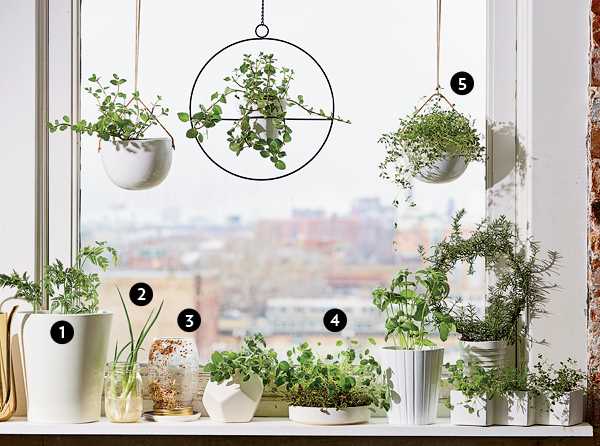
Basil is a versatile herb that can be grown both indoors on a windowsill and outdoors in a vegetable garden. It is relatively easy to grow and requires minimal attention, making it a great choice for beginner gardeners.
Choosing a Variety
There are many different varieties of basil available, each with its own unique flavor and appearance. Some popular varieties include Genovese, Sweet Thai, and Lemon basil. Consider the purpose of growing basil to determine which variety is best for you.
Planting and Transplanting
Basil can be grown from seeds or transplanted as young plants. When growing from seeds, sow them in a pot filled with potting soil and cover them lightly with soil. Place the pot in a warm and sunny location and keep the soil moist until the seeds germinate. Transplant the seedlings into larger pots or the garden once they have established a few sets of leaves.
Light and Temperature Requirements
Basil thrives in bright sunlight, so it is important to provide it with at least 6-8 hours of direct sunlight each day. If growing indoors, place the plant near a south-facing window or use artificial grow lights. Basil prefers warm temperatures between 60-80°F (15-27°C), so avoid exposing it to extreme cold or heat.
Watering and Fertilizing
Keep the soil evenly moist but not waterlogged. Water the basil plants when the top inch of soil feels dry to the touch. Avoid overwatering as it can lead to root rot. Basil plants benefit from regular feeding with a balanced fertilizer. Apply a water-soluble fertilizer once every two weeks during the growing season.
Pruning and Harvesting
To encourage bushy growth, regularly pinch off the tips of the basil plants. This will also prevent the plant from flowering too soon, as flowering can lead to a decline in the flavor and quality of the leaves. Harvest the basil leaves by cutting them just above a pair of healthy leaves. This will encourage the plant to produce new growth.
Pests and Diseases
Basil is generally resistant to pests and diseases, but it can occasionally be affected by aphids, mites, or fungal diseases. To prevent pest infestations, keep the basil plants well-spaced and provide good air circulation. If necessary, treat pest or disease problems with organic insecticides or fungicides.
Using Basil in the Kitchen
Basil is a popular culinary herb that is used in a variety of dishes, including pasta sauces, salads, soups, and pesto. It can be used fresh, dried, or frozen for later use. To preserve basil, harvest the leaves and store them in an airtight container in the refrigerator or freeze them in ice cube trays with a little water or oil.
By following these basic guidelines, you can successfully grow and enjoy fresh basil throughout the growing season. Whether you choose to grow it indoors or in a garden, the fragrant leaves and versatile flavors of basil will be a welcome addition to your kitchen.
Choosing the Right Variety
When choosing a basil variety to grow, it’s important to consider the climate and growing conditions in your area, as well as the intended use of the basil. Here are a few popular basil varieties to consider:
Sweet Basil (Ocimum basilicum)
Sweet basil is the most common and popular variety of basil. It has a classic sweet and aromatic flavor that is perfect for pesto, sauces, and Italian dishes. Sweet basil is also a great choice for beginners as it is easy to grow and care for.
Thai Basil (Ocimum basilicum var. thyrsiflora)
Thai basil has a unique flavor with hints of anise and licorice. It is commonly used in Thai and Vietnamese cuisine, adding a distinctive taste to dishes like curries and stir-fries. Thai basil has a purple stem and blooms with purple flowers.
Genovese Basil (Ocimum basilicum ‘Genovese’)
Genovese basil is a variety of sweet basil that is particularly prized for its intense aroma and flavor. It has large, dark green leaves and is the preferred basil for making traditional pesto. Genovese basil is also a popular choice for growing in the vegetable garden.
Lemon Basil (Ocimum basilicum var. citriodorum)
Lemon basil has a refreshing lemony fragrance and taste. It can be used in both sweet and savory dishes and pairs well with fish, poultry, and salads. Lemon basil varieties have lighter green leaves and a citrus scent that sets them apart from other basil varieties.
Compact Basil (Ocimum basilicum ‘Spicy Globe’)
Compact basil is a dwarf variety of sweet basil that is ideal for growing in containers or smaller spaces. It has a compact growth habit and small leaves, making it a great choice for windowsill gardens. Despite its smaller size, compact basil still packs a punch of flavor.
These are just a few examples of the many basil varieties available. Consider your specific needs and preferences when choosing a basil variety to grow, and don’t be afraid to experiment with different flavors and aromas to find your favorite.
Preparing the Soil
1. Choose the Right Location
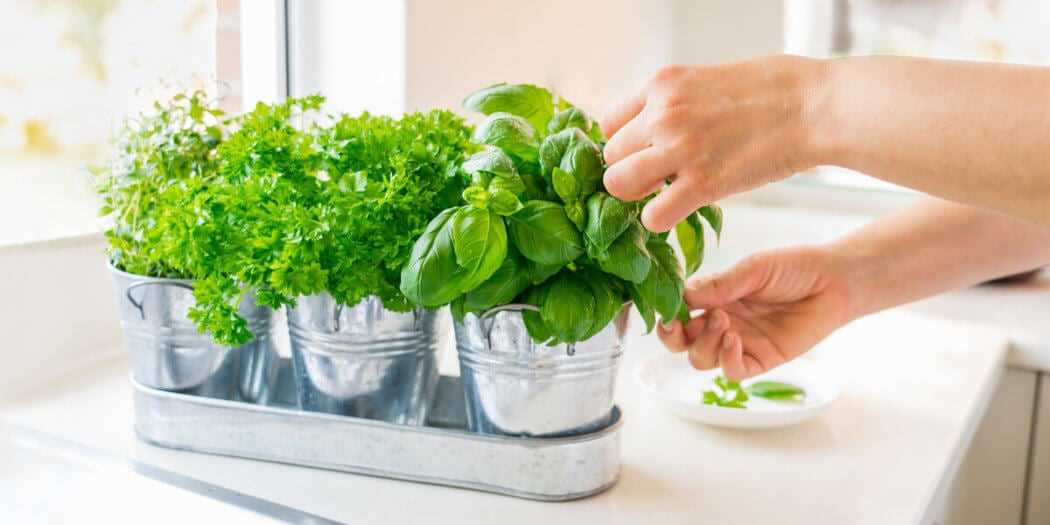
Before you start preparing the soil, choose a suitable location for growing basil. Basil prefers full sun, so look for a spot that receives at least 6-8 hours of direct sunlight per day. It’s also important to choose a well-draining area, as basil doesn’t like to sit in waterlogged soil.
2. Clear the Area
Clear the area of any existing vegetation, rocks, or debris. Use a garden hoe or rake to remove any weeds or grass. This will provide a clean and clear space for your basil plants to grow without competition from other plants.
3. Test the Soil
Testing the soil before planting your basil is essential to ensure it has the right pH level and nutrient content. Basil prefers a slightly acidic soil with a pH range of 6 to 7. You can purchase a soil testing kit from a garden center or send a soil sample to a local cooperative extension office for analysis.
4. Improve the Soil
If the soil test indicates that your soil is too acidic or lacks nutrients, you can improve it by adding amendments. Common amendments include organic matter like compost or well-rotted manure, which will improve soil structure and fertility. Mix the amendments into the top 6-8 inches of soil using a garden fork or tiller.
5. Ensure Proper Drainage
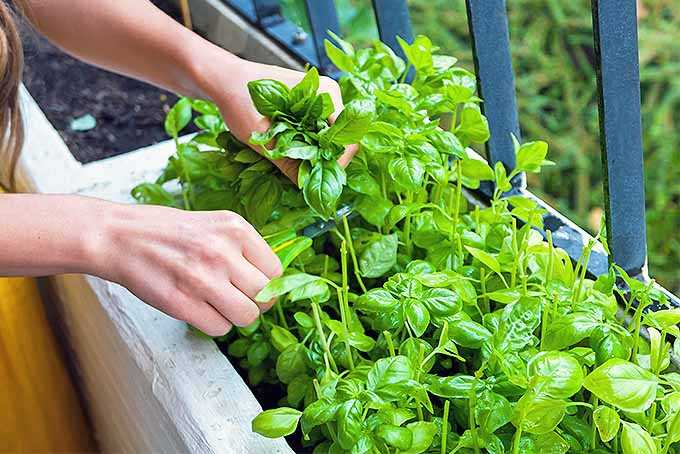
Good drainage is crucial for basil plants. To improve drainage, you can add organic matter or coarse sand to the soil. This will help prevent waterlogging and root rot. Avoid planting basil in areas with poor drainage, such as low-lying spots or heavy clay soils.
6. Level and Smooth the Soil
After adding amendments and ensuring proper drainage, level and smooth the soil surface using a rake. This will create a flat and even surface for planting your basil seeds or transplants.
7. Mulch the Soil
Mulching the soil around your basil plants will help conserve moisture, suppress weed growth, and regulate soil temperature. Apply a layer of organic mulch, such as straw or wood chips, around the base of the plants, taking care not to cover the stems or leaves.
8. Water the Soil
Before planting your basil seeds or transplants, thoroughly water the soil to ensure it is evenly moist. This will help the basil plants establish roots and adapt to their new environment.
By following these steps to prepare the soil, you will create an ideal growing environment for your basil plants and help them thrive throughout the growing season.
Growing Basil on the Windowsill
Growing basil on your windowsill is a great way to ensure a fresh supply of this versatile herb right at your fingertips. With the right care and conditions, basil will thrive indoors and provide you with a fragrant and flavorful ingredient for your culinary creations.
Choosing the Right Location
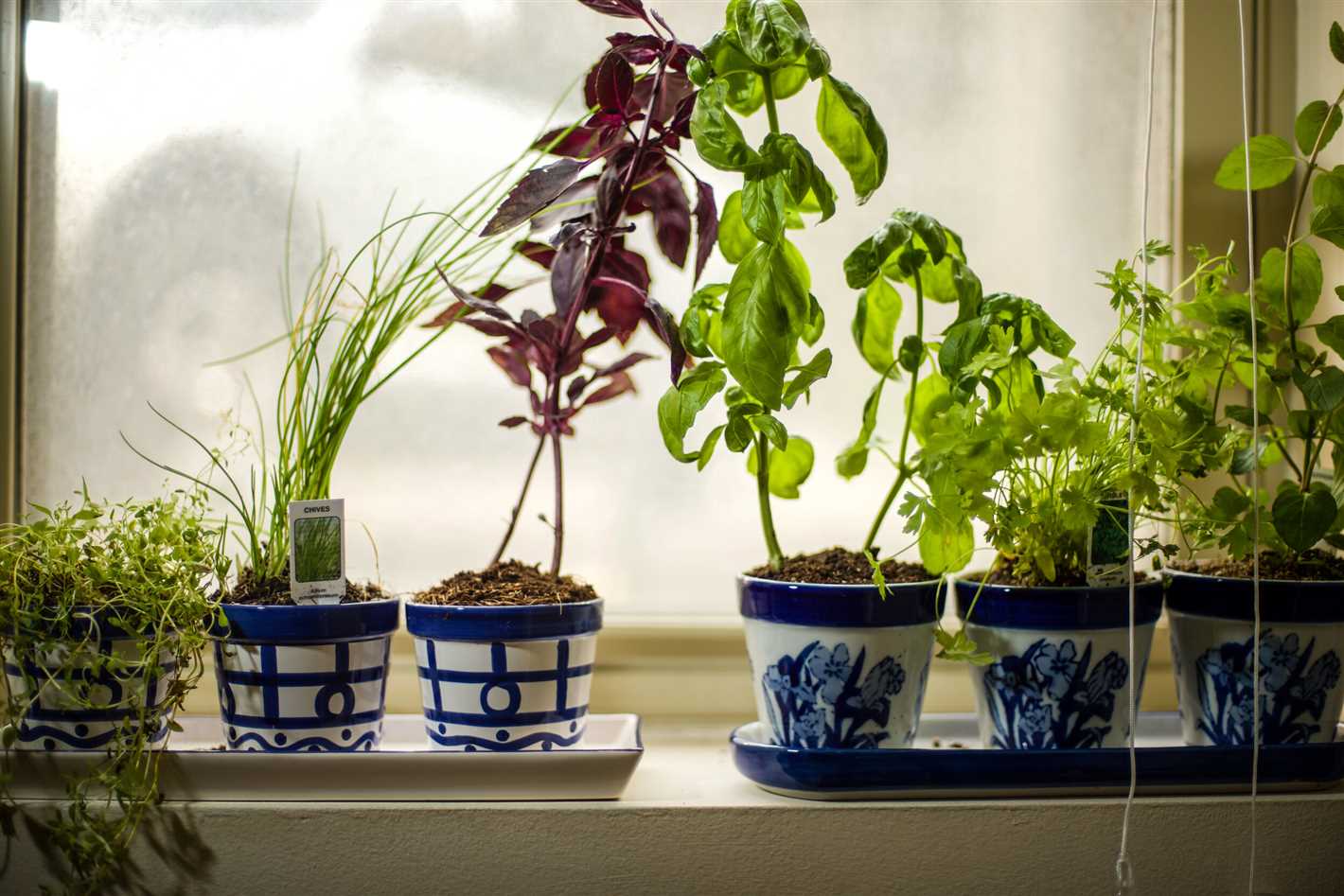
When growing basil on the windowsill, it is important to choose a location that receives at least 6-8 hours of direct sunlight each day. Basil plants love sunlight and need it to grow and thrive. Place your basil plant in a south-facing window or any window that gets ample sunlight throughout the day.
Choosing the Right Container
Choose a well-draining container that is at least 6 inches deep to plant your basil. Ensure that the container has drainage holes at the bottom to allow excess water to escape. Basil plants prefer soil that is slightly acidic and well-draining.
Planting and Watering
Fill the container with potting soil and plant the basil seeds or seedlings about 1/4 inch deep. Water the soil thoroughly after planting and ensure that the soil remains evenly moist throughout the growing season. Avoid overwatering as this can lead to root rot.
Providing Adequate Care
Make sure to provide regular care to your basil plants on the windowsill. This includes regular watering, fertilizing every 2-3 weeks with a balanced liquid fertilizer, and pruning regularly to encourage bushy growth.
Harvesting Basil
You can start harvesting basil leaves once the plant has reached a height of about 6-8 inches. Harvesting regularly will ensure a continuous supply of fresh leaves and promote new growth. Pinch off the leaves from the stem and avoid removing more than one-third of the plant at a time.
Pests and Diseases
Monitor your basil plants for any signs of pests or diseases. Common pests that affect basil include aphids, spider mites, and whiteflies. Additionally, basil is susceptible to fungal diseases such as powdery mildew. Use organic pest control methods or consult a gardening expert if you notice any issues with your basil plants.
Growing basil on the windowsill is a convenient way to have fresh basil at your disposal for cooking, garnishing, and even making homemade pesto. Follow these tips and you’ll be enjoying the wonderful aroma and taste of homegrown basil in no time!
Selecting a Sunny Location
When choosing a location to grow basil, it is important to select a spot that receives ample sunlight. Basil plants thrive in full sun, which is typically at least 6-8 hours of direct sunlight per day.
Basil also requires a warm environment, so it is important to choose a location that is not subjected to cold drafts or extreme temperature changes. A windowsill that faces south or west is ideal for growing basil, as it will receive the most sunlight throughout the day.
If you are planning to grow basil in a vegetable garden, choose a spot that is not shaded by trees or other plants. Ensure that the area is clear of any obstructions that may block the sun.
Additionally, it is important to consider the soil conditions in the selected location. Basil prefers well-drained soil that is rich in organic matter. If the soil in your chosen location is heavy or clayey, consider improving it by adding compost or other organic amendments to improve its drainage and fertility.
Providing Adequate Water and Drainage
Proper watering is essential for growing healthy basil plants both indoors and outdoors. Whether you are growing basil on the windowsill or in the vegetable garden, it’s important to provide adequate water and proper drainage.
1. Watering Indoor Basil Plants
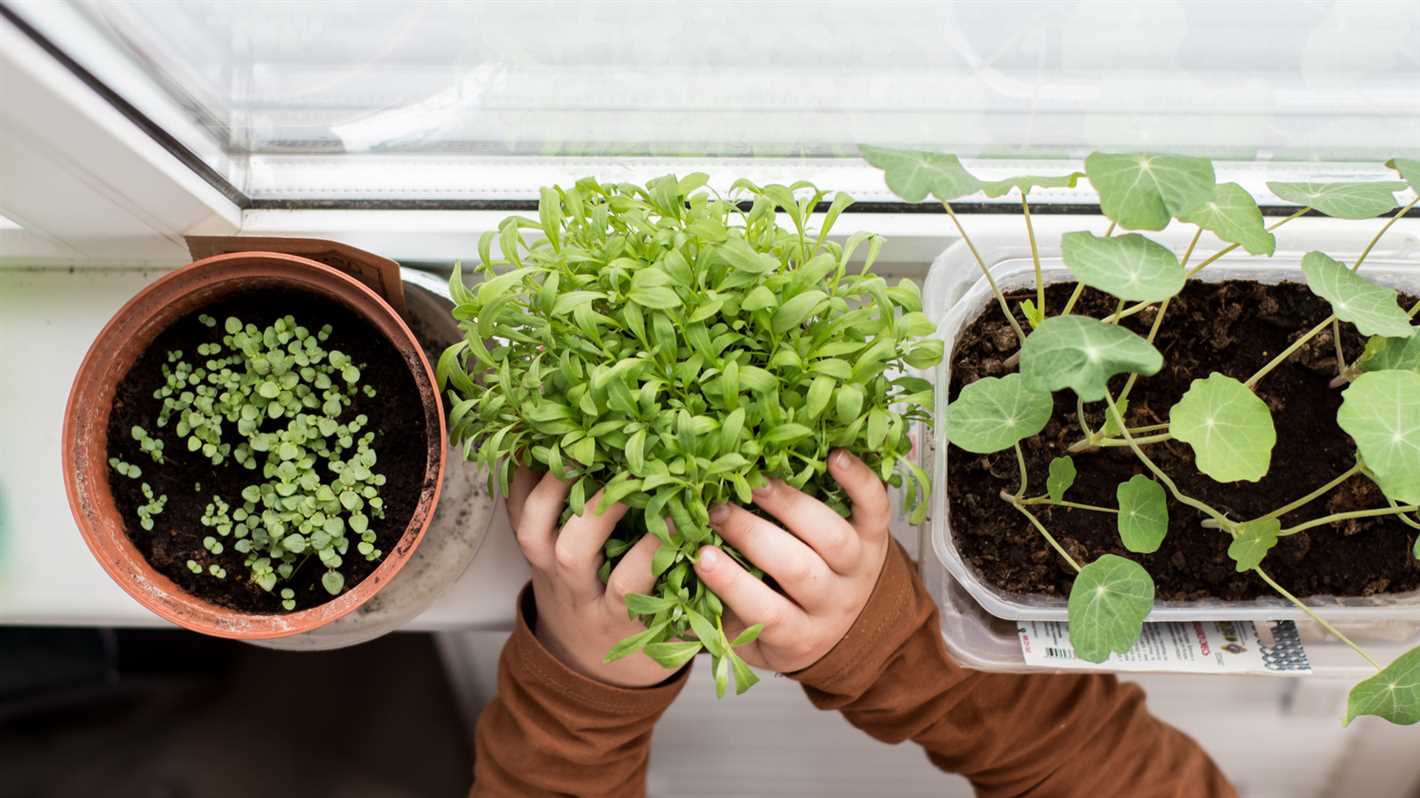
When growing basil on the windowsill, it’s crucial to water the plants regularly. Basil prefers evenly moist soil, so check the moisture level in the potting mix every couple of days. Stick your finger about an inch into the soil – if it feels dry, it’s time to water.
Water the basil plants from the base, either by pouring water into the saucer or using a watering can with a long spout. Avoid wetting the foliage as this can increase the risk of disease. Ensure that the water reaches the bottom of the pot and drains out through the drainage holes to prevent waterlogged roots.
2. Watering Outdoor Basil Plants
When growing basil in the vegetable garden, it’s important to water the plants deeply and consistently. Basil plants need about 1 inch of water per week, and it’s best to water them in the morning to allow foliage to dry before evening.
One effective way to water basil in the garden is to use a soaker hose or a drip irrigation system. This ensures that the water reaches the roots directly without wetting the foliage. It also helps to prevent water wastage and reduces the risk of leaf diseases.
3. Ensuring Proper Drainage
Both indoor and outdoor basil plants require good drainage to prevent waterlogged roots. If growing basil in containers, make sure the pots have drainage holes at the bottom. This allows excess water to escape, preventing root rot.
In the garden, ensure that the soil is well-drained. If the soil retains too much moisture, consider mixing in organic matter like compost or vermiculite to improve drainage.
Lastly, avoid overwatering or allowing the basil plants to sit in water for long periods as this can lead to root rot and other issues. It’s better to underwater than overwater basil plants.
Caring for Basil Plants
1. Watering
Basil plants require regular watering to stay healthy and productive. It is important to keep the soil consistently moist, but not overly saturated. Water your basil plants when the top inch of soil feels dry to the touch. Be sure to water at the base of the plant, avoiding getting water on the leaves, as this can lead to disease.
2. Sunlight
Basil plants thrive in full sun, so be sure to place them in a sunny location where they can receive at least 6-8 hours of direct sunlight per day. If you are growing basil indoors, place your pots near a sunny window or use grow lights to provide adequate light.
3. Temperature
Basil plants prefer warm temperatures between 60-80°F (15-27°C). They are very sensitive to cold temperatures, so make sure to protect them from frost and chilly drafts. In colder climates, it is best to grow basil as an annual or bring it indoors during the winter months.
4. Fertilizing
To promote healthy growth, it is recommended to fertilize your basil plants every 4-6 weeks during the growing season. Use a balanced, water-soluble fertilizer and follow the instructions on the package for application rates. Avoid over-fertilizing, as this can lead to excessive leaf growth with reduced flavor.
5. Pruning
Regular pruning is essential for maintaining compact and bushy basil plants. Pinch off the tips of the stems regularly to encourage branching and prevent the plant from becoming leggy. Additionally, remove any yellow or wilted leaves to promote air circulation and reduce the risk of disease.
6. Pests and Diseases
Basil plants can be susceptible to a few common pests and diseases. Keep an eye out for aphids, whiteflies, and caterpillars, which can be removed by hand or treated with insecticidal soap. Fungal diseases, such as powdery mildew, can be prevented by ensuring good air circulation and avoiding overhead watering.
7. Harvesting
Basil leaves can be harvested once the plant has reached a height of 6-8 inches (15-20 cm). Pinch off the leaves at the stem, starting with the largest leaves on the outside of the plant. Regular harvesting will encourage new growth and keep the plant productive throughout the season.
8. Storing
Fresh basil leaves can be stored in the refrigerator for a few days. To extend their shelf life, you can also freeze basil leaves by removing them from the stems, blanching them briefly in boiling water, and then storing them in an airtight container in the freezer. Another option is to make pesto or basil-infused oil to preserve the flavor of the basil for future use.
Pruning and Harvesting Basil
Pruning and harvesting basil is essential for promoting healthy growth and maximizing the flavor of the herb. Here are some expert tips:
1. Pruning
Regularly pruning basil is important to encourage bushier growth and prevent it from becoming leggy. To prune basil:
- Start pruning when the plant reaches about 6 inches in height.
- Pinch off the top 2-3 sets of leaves, just above a leaf node, using your fingers or sharp scissors.
- Prune any flowers that start to develop, as they can negatively affect the flavor and growth of the plant.
- Continue to prune regularly, removing the top couple of leaves as needed.
2. Harvesting
Harvesting basil leaves at the right time is crucial for the best flavor. Here’s how to harvest basil:
- Begin harvesting basil once the plant has grown to about 6-8 inches in height.
- Select mature leaves from the top of the plant, as they have the most flavor.
- Use sharp scissors or shears to cut the leaves just above a leaf node.
- Harvesting regularly will encourage new growth and ensure a continuous supply of fresh basil.
3. Storing Basil
Proper storage will help keep your harvested basil fresh for longer. Here are some tips for storing basil:
- Do not wash basil leaves before storing, as moisture can cause them to wilt.
- Place the basil leaves in a resealable plastic bag or an airtight container.
- Store in the refrigerator’s crisper drawer.
- Alternatively, you can also freeze basil leaves by packing them loosely in a zip-top bag and storing in the freezer.
- Use frozen basil in cooked dishes for best results.
By following these pruning and harvesting techniques, you can enjoy a bountiful supply of fresh and aromatic basil throughout the growing season.
Fertilizing Basil Plants
Basil plants are heavy feeders and require regular fertilization to thrive. Fertilizing your basil plants will help them grow faster, produce larger leaves, and have a stronger flavor. Here are some expert tips on how to fertilize your basil plants:
Type of Fertilizer
When it comes to fertilizing basil plants, there are two main types of fertilizer you can use: organic and synthetic.
- Organic Fertilizer: Organic fertilizers, such as compost or well-rotted manure, provide slow-release nutrients to the basil plants. This type of fertilizer helps improve the soil structure and promotes long-term soil fertility.
- Synthetic Fertilizer: Synthetic fertilizers, such as balanced granular fertilizers or water-soluble fertilizers, provide quick-release nutrients to the basil plants. This type of fertilizer delivers instant nutrients but should be used sparingly to avoid over-fertilization.
When to Fertilize
You should start fertilizing your basil plants after they have established a strong root system, usually around 4-6 weeks after planting. Fertilize regularly throughout the growing season, roughly every 2-4 weeks.
How to Fertilize
Here is a step-by-step guide on how to fertilize your basil plants:
- Prepare the soil: Before fertilizing, make sure the soil is moist. If the soil is dry, water your basil plants the day before fertilizing.
- Select the fertilizer: Choose either an organic or synthetic fertilizer according to your preference.
- Measure the fertilizer: Follow the instructions on the fertilizer package to determine the correct amount to use.
- Apply the fertilizer: Sprinkle the fertilizer evenly around the base of the basil plants, avoiding direct contact with the stems or leaves.
- Water the plants: After applying the fertilizer, water the plants thoroughly to help distribute the nutrients throughout the soil.
Additional Tips
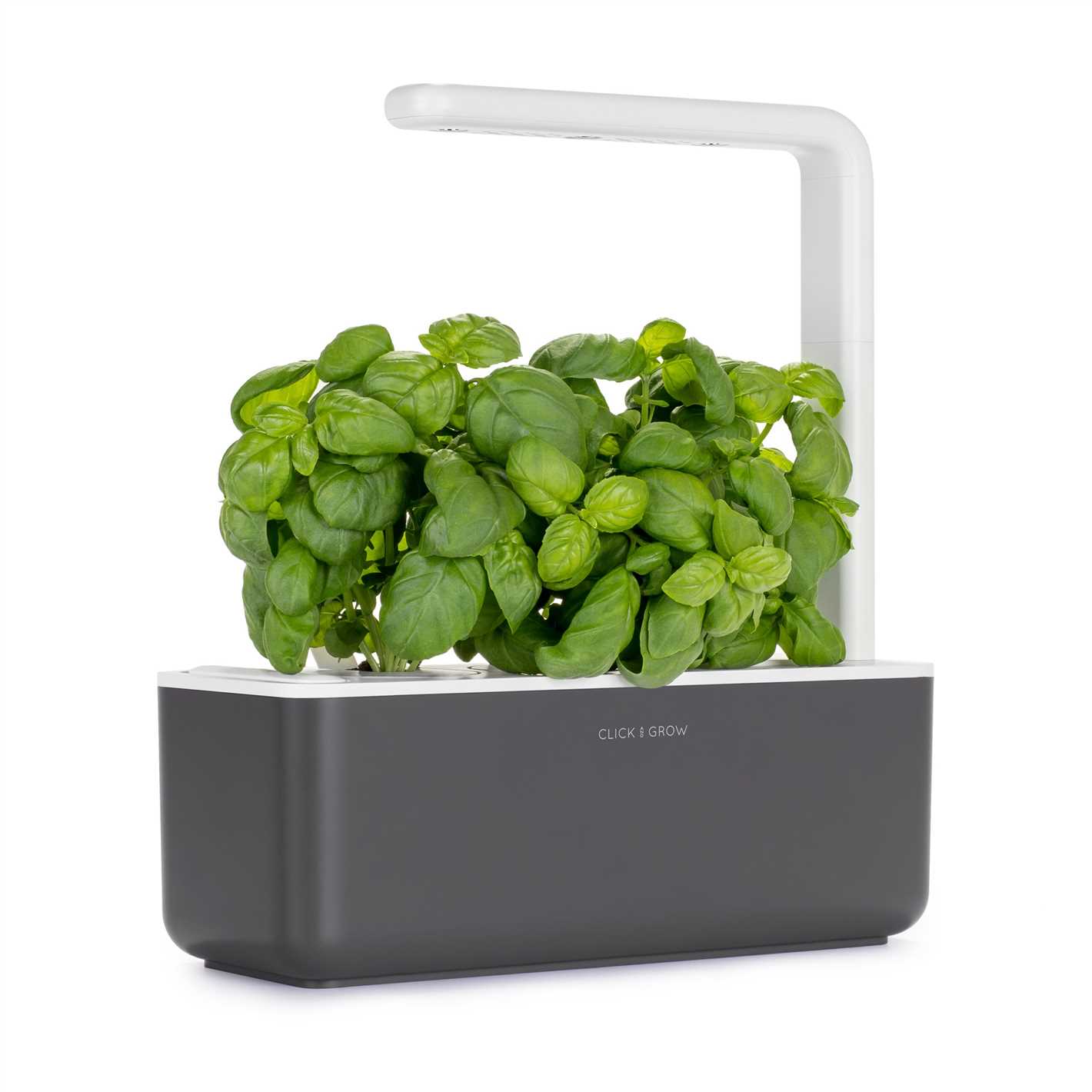
Here are some additional tips to keep in mind when fertilizing your basil plants:
- Avoid over-fertilization: Over-fertilization can harm your basil plants, so it’s important to follow the recommended dosage and frequency of application.
- Monitor the soil: Regularly check the moisture level of the soil to ensure it doesn’t dry out or become waterlogged. Adjust your watering and fertilizing schedule accordingly.
- Use organic matter: Incorporating organic matter, such as compost or mulch, into the soil can help improve its nutrient content and water-holding capacity.
- Watch for signs of nutrient deficiency: Yellowing or pale leaves may indicate a nutrient deficiency. Adjust your fertilization strategy if necessary.
By following these tips and providing your basil plants with the necessary nutrients, you can ensure they grow healthy and flavorful, whether you’re growing them on the windowsill or in the vegetable garden.
Pests and Diseases
Basil plants are generally resistant to many pests and diseases, but there are still a few common issues that may arise. Being aware of these problems and taking necessary precautions can help ensure healthy basil plants.
Common Pests
- Aphids: These small insects can suck sap from the leaves, causing them to turn yellow and curl. Use insecticidal soap or neem oil to control aphids.
- Whiteflies: These tiny, white insects can fly around the basil plants and cause damage by sucking sap. Use sticky traps or introduce beneficial insects like ladybugs to control whiteflies.
- Spider mites: These tiny pests can cause webbing on the leaves and cause yellowing. Spray the plants with water or use insecticidal soap to control spider mites.
- Slugs: Slugs can eat the leaves and leave behind slime trails. Hand pick slugs or use slug traps to control them.
Common Diseases
- Downy mildew: This fungal disease can cause yellowing and wilting of basil leaves. Avoid overhead watering and provide good air circulation to prevent downy mildew.
- Fusarium wilt: This soil-borne fungus can cause wilting and yellowing of basil plants. Plant resistant basil varieties and avoid overwatering to prevent fusarium wilt.
- Powdery mildew: This fungal disease appears as a white powdery coating on the leaves. Remove infected leaves and provide good air circulation to prevent powdery mildew.
- Root rot: This disease is caused by overwatering and poorly draining soil. Ensure the soil is well-drained and avoid overwatering to prevent root rot.
Apart from these common pests and diseases, it is important to regularly inspect the basil plants for any signs of unusual damage or discoloration. Taking prompt action can help prevent the spread of pests and diseases and ensure healthy basil plants.
“Question-Answer”
What are some expert tips for growing basil on the windowsill?
Some expert tips for growing basil on the windowsill include placing the basil plants in a location that receives at least six hours of sunlight each day, ensuring the soil is well-draining, and watering the plants consistently. It is also recommended to trim the basil regularly to promote bushier growth and to pinch off any flowers that appear.
How often should basil plants on the windowsill be watered?
Basil plants on the windowsill should be watered consistently, keeping the soil evenly moist. It is important not to over-water the plants, as this can lead to root rot. Watering once or twice a week should be sufficient, but it may vary depending on the environment and the specific needs of the plants.
Can basil be grown in a vegetable garden?
Yes, basil can be grown in a vegetable garden. It is a great companion plant for many vegetables, such as tomatoes and peppers, as it helps repel pests and improve overall plant health. When planting basil in the vegetable garden, it is important to provide it with well-draining soil, regular watering, and sufficient sunlight.
How long does it take for basil to grow in the vegetable garden?
The time it takes for basil to grow in the vegetable garden can vary depending on various factors, such as the specific variety of basil, environmental conditions, and care given to the plants. On average, however, basil plants can be harvested for leaves within 60 to 90 days after sowing the seeds.
What are some common problems and diseases that can affect basil plants?
Some common problems and diseases that can affect basil plants include fungal diseases like powdery mildew, downy mildew, and fusarium wilt. Pests such as aphids, spider mites, and whiteflies can also be a problem. It is important to monitor the plants regularly for any signs of disease or pest infestation and take appropriate action, such as using organic pest control methods or removing affected plants to prevent the spread of the problem.







